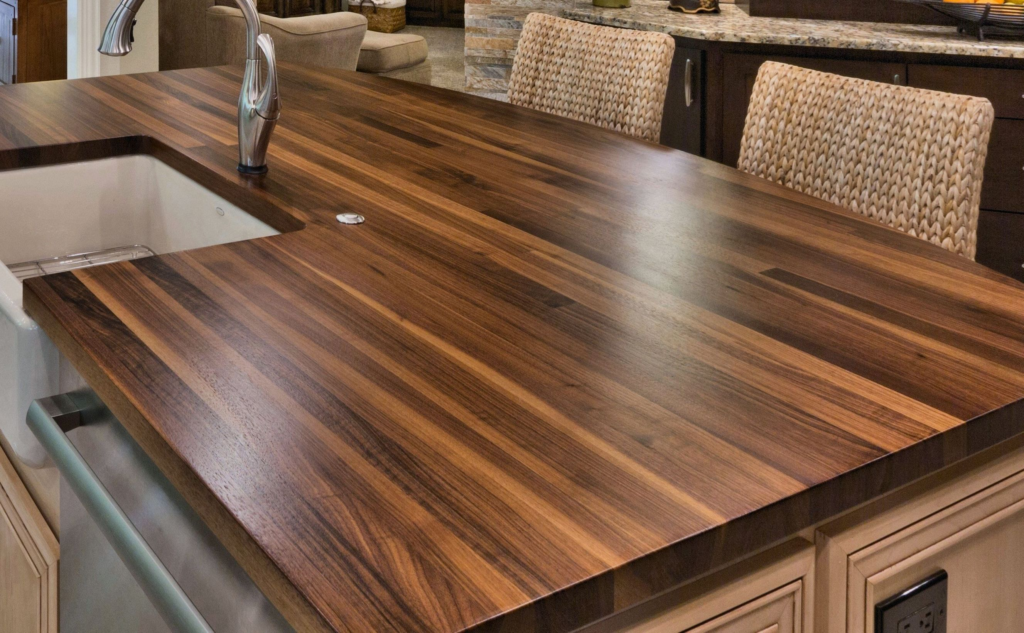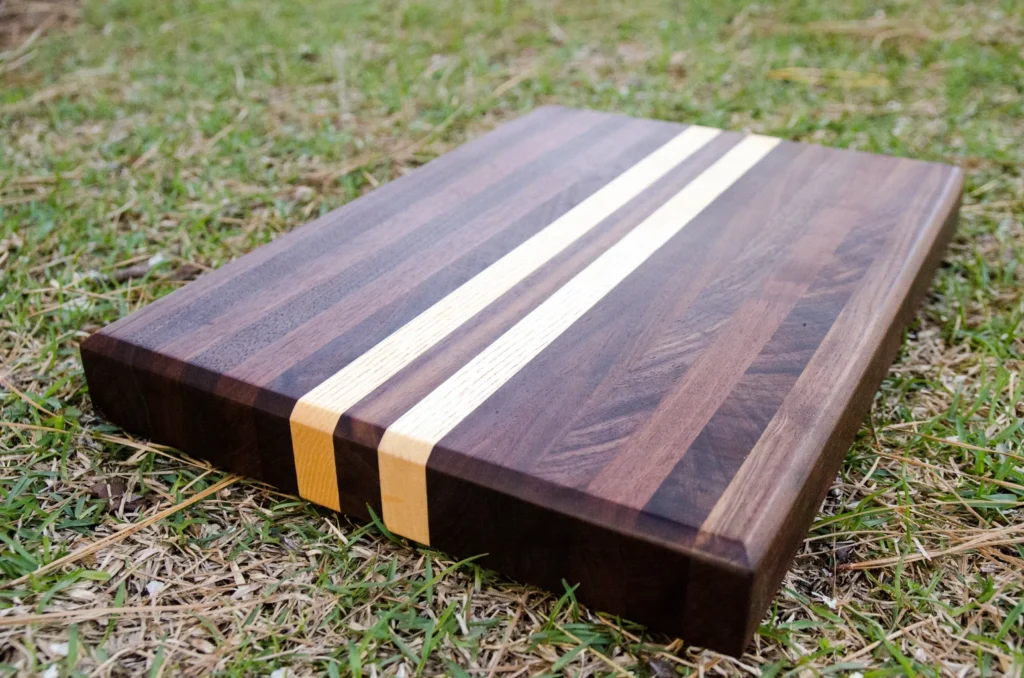An edge grain butcher block is a type of cutting board or countertop crafted by arranging wooden strips so that the narrow edges (or “edge grain”) of the wood are visible on the surface. This design is popular for its durability, aesthetic appeal, and functionality in the kitchen. Often made from hardwoods like maple, walnut, or oak, edge grain butcher blocks are a timeless addition to any culinary space. Their smooth surface is ideal for chopping, slicing, and food prep, while also being gentle on knives compared to harder surfaces like plastic or glass.
Why Choose Edge Grain Butcher Blocks?
Edge grain butcher blocks are a favorite choice for both professional chefs and home cooks, and there are plenty of reasons why. The construction method makes these blocks strong, stable, and long-lasting. Since the strips of wood are glued together with their edges facing upward, this type of butcher block resists warping and cracking better than other options, such as end grain or plastic boards.
Aesthetics are another big reason why people choose edge-grain butcher blocks. They showcase the natural beauty of wood grain patterns, offering a sleek, uniform look that complements any kitchen style. On top of that, edge grain surfaces are smooth yet sturdy, making them perfect for heavy-duty use without wearing down knives as quickly as harder materials.
How Are Edge Grain Butcher Blocks Made?
The process of making an edge grain butcher block is meticulous and designed to enhance durability and beauty. First, hardwood planks are carefully selected for quality and appearance. These planks are then cut into narrow strips, which expose the “edge grain” along the long, narrow sides of the wood. The strips are aligned side-by-side, creating a consistent grain pattern across the surface.
Next, the strips are glued together under pressure to form a solid block. After the glue dries, the block is planed, sanded, and finished to achieve a smooth surface. Many manufacturers also seal the butcher block with food-safe oils or finishes to protect the wood and make it safe for food preparation.
What Makes Edge Grain Different?

Are They Better Than Plastic Boards?
Yes, edge-grain butcher blocks are often considered superior to plastic cutting boards for several reasons. While plastic boards are lightweight and easy to clean, they tend to wear out quickly, with knife marks accumulating on the surface. These grooves can trap bacteria, making plastic boards less hygienic over time.
On the other hand, edge-grain butcher blocks are more durable and naturally antimicrobial due to the properties of hardwoods. When properly cared for, a wooden butcher block can last decades, whereas plastic boards often need replacement after just a few years.
Types of Wood Used in Edge Grain Blocks
Edge grain butcher blocks are commonly made from hardwoods, which are preferred for their strength and longevity. Popular woods include:
- Maple: Known for its smooth grain and light color, maple is a top choice for edge-grain butcher blocks.
- Walnut: Walnut offers a rich, dark hue that adds elegance to any kitchen.
- Cherry: Cherry wood has a warm, reddish tone that deepens over time.
- Oak: Oak is valued for its strength and unique grain patterns.
- Teak: Naturally resistant to moisture, teak is an excellent option for humid environments.
Each wood type has its own characteristics, allowing you to choose one that suits your style and needs.
Benefits of Using an Edge Grain Butcher Block
Edge grain butcher blocks offer a range of benefits, including:
- Durability: The edge grain construction resists warping and cracking, even with regular use.
- Knife-Friendly Surface: Wooden surfaces are gentle on knives, helping to maintain their sharpness.
- Aesthetic Appeal: The natural grain patterns of wood make these blocks a beautiful addition to any kitchen.
- Versatility: Edge grain blocks can double as cutting boards and attractive serving platters.
- Eco-Friendliness: Many butcher blocks are made from sustainably sourced wood, making them an environmentally conscious choice.
How to Care for Your Edge Grain Butcher Block
Proper care is essential to ensure your edge grain butcher block remains in excellent condition for years to come. After each use, clean the block with warm, soapy water and dry it immediately to prevent moisture damage. Avoid soaking the block or placing it in a dishwasher, as excessive water can cause the wood to warp or split.
Periodically oil your butcher block to maintain its finish and prevent the wood from drying out. Use a food-safe oil (such as mineral oil) and apply it evenly across the surface. Let the oil soak in for several hours or overnight before wiping away any excess.
Best Oils for Butcher Blocks
To keep your edge grain butcher block in top shape, it’s important to use the right oil. The best oils for butcher blocks include:
- Food-Grade Mineral Oil: A popular choice due to its affordability and effectiveness.
- Beeswax Blends: Many commercial butcher block conditioners combine beeswax with mineral oil for added protection.
- Coconut Oil: Fractionated (refined) coconut oil is another excellent option as it resists rancidity.
- Walnut Oil: A natural and non-toxic alternative, though it may not be suitable for those with nut allergies.
These oils penetrate the wood, creating a protective barrier against moisture and stains.
How Often Should You Oil It?
The frequency of oiling depends on how often you use your edge-grain butcher block. As a general rule, oil it once a month or whenever the surface appears dry or starts to feel rough. New butcher blocks may need more frequent oiling during the first few months to build up a protective layer.

Regular oiling not only extends the life of your butcher block but also enhances its appearance by bringing out the natural grain patterns of the wood.
Can You Sand Down Your Block?
Yes, you can sand down your edge grain butcher block if it becomes scratched, stained, or uneven over time. Use fine-grit sandpaper to gently smooth the surface, working in the direction of the grain. After sanding, clean the block thoroughly and reapply oil to restore its protective finish.
Edge Grain Butcher Block vs. End Grain
While both edge grain and end grain butcher blocks are made from wood, they differ in construction and performance. Edge grain blocks are made by aligning the wood strips with the grain, running lengthwise, resulting in a smooth, uniform surface. In contrast, end grain blocks are made by arranging the wood so that the cut ends (or “end grain”) face upward, creating a checkerboard pattern.
End grain blocks are more forgiving on knives and self-healing (knife marks close up over time), but they are also more expensive and require more maintenance. Edge grain blocks, on the other hand, are more affordable, easier to maintain, and still highly durable, making them a popular choice for everyday use.
Common Sizes of Edge Grain Butcher Blocks
Edge grain butcher blocks come in a variety of sizes to suit different needs:
- Small: 12″ x 8″ – Ideal for compact kitchens or light chopping tasks.
- Medium: 18″ x 12″ – A versatile size for most home cooks.
- Large: 24″ x 18″ – Perfect for heavy-duty use or prepping large quantities of food.
- Custom Sizes: Many manufacturers offer custom sizes to fit specific countertops or kitchen layouts.
Are Edge Grain Butcher Blocks Worth It?
Absolutely! Edge grain butcher blocks are a worthwhile investment for anyone who loves cooking. They are durable, stylish, and practical, offering a combination of beauty and functionality that few other kitchen tools can match. With proper care, an edge grain butcher block can last a lifetime, making it a cost-effective choice in the long run.
The Bottom Line
An edge grain butcher block is more than just a cutting board – it’s a reliable kitchen companion that combines durability, beauty, and functionality. Whether you’re a professional chef or a home cook, this type of butcher block is an excellent choice for all your food prep needs. By selecting the right wood, maintaining it properly, and understanding its unique benefits, you’ll enjoy years of use from this timeless kitchen essential.
So, if you’re in the market for a cutting board or countertop upgrade, consider the edge grain butcher block. It’s a smart choice that will elevate your cooking experience and add a touch of natural beauty to your kitchen.


